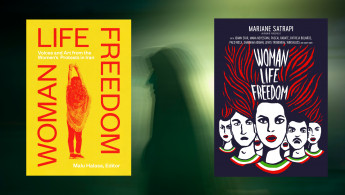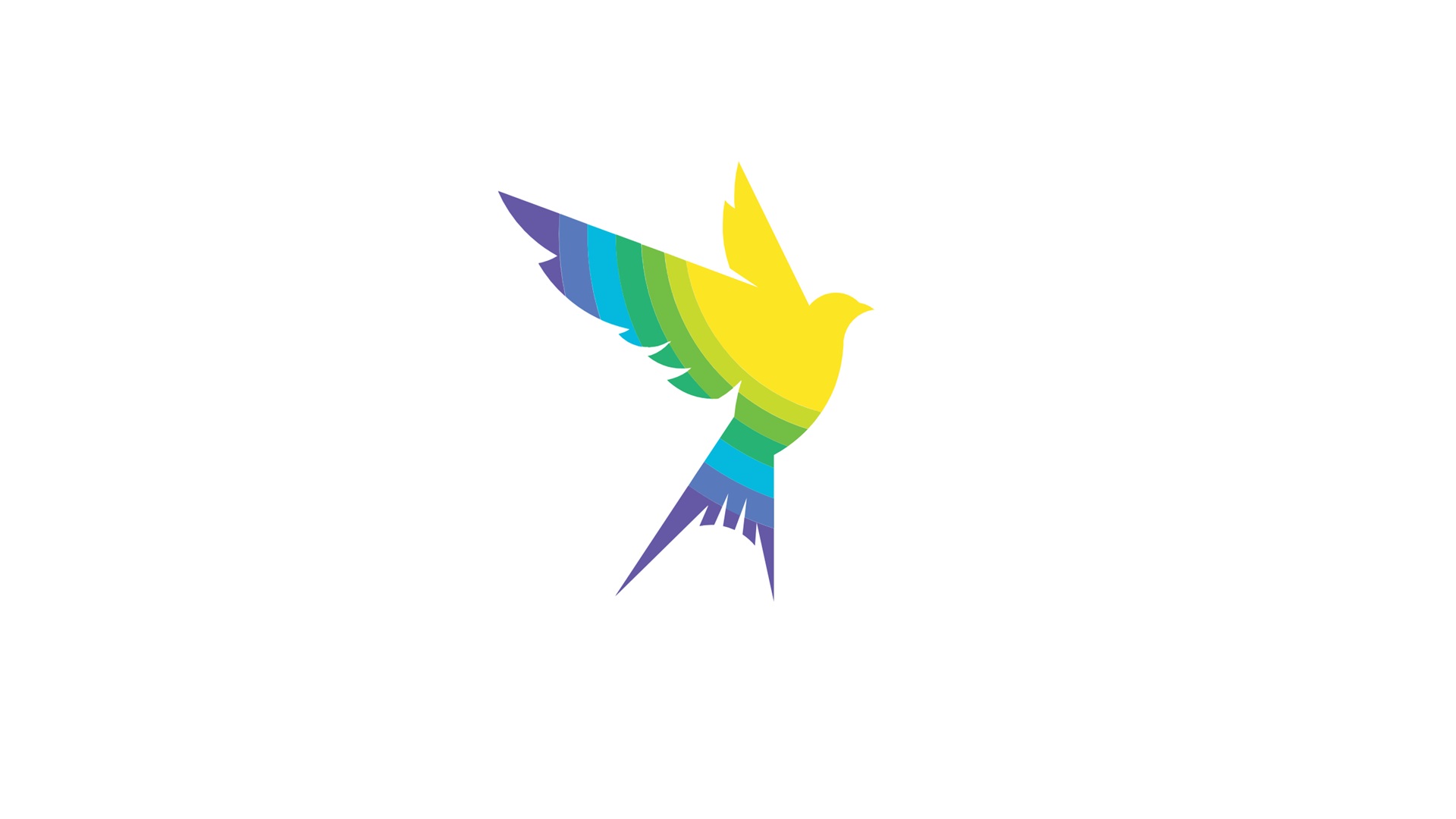Women Life Freedom: How prose and photos captured the Iranian feminist movement
On 16 September 2022, the young Kurdish-Iranian woman Mahsa “Jina” Amini died under police custody, after being arrested for allegedly failing to wear her headscarf properly.
The tragic event sparked a social protest movement in Iran and abroad under the slogan Zan Zendegi Azadi or Jin Jîyan Azadî, which means “Woman Life Freedom” in Persian and Kurdish, respectively.
One year later, two graphic books combine words and images to create a powerful and groundbreaking storytelling visual collection about the Iranian feminist movement, which advocates for women's rights.
"Iranian women experience discrimination in ways that deeply impact their lives. The battle against the hijab compulsory wearing enforcement is just an example. It has been largely fought by a myriad of individual acts staged by women in Iran"
Woman Life Freedom. Voices and Art from the Women’s Protests in Iran edited by Malu Halasa (Saqi Books, September 2023) put forward the work of more than 50 writers and artists, capturing the historical moment in artwork and first-person accounts.
In the same vein, Marjane Satrapi returned to graphic novels by working together with over 20 activists, artists, journalists, and academics on a collection of stories originally published in French with a similar title Femme, vie, liberté (L’Iconoclaste, September 2023).
The English edition of the book is going to be released by Seven Stories Press to coincide with Nowruz (Iranian New Year) on 19 March 2024 in the US and on 20 March 2024 in the UK.
These two graphic books speak to different generations with great authenticity because the struggle for the liberation of women is far from won in Iran.
A revolution of the anonymous
Malu Halasa is a Jordanian-Filipina-American writer and editor based in London. Her edited volumes include The Secret Life of Syrian Lingerie: Intimacy and Design (Chronicle Books, 2008), with the designer Rana Salam, and the critically acclaimed Syria Speaks: Art and Culture from the Frontline (Saqi Books, 2014).
Halasa’s new book titled Woman Life Freedom. Voices and Art from the Women’s Protests in Iran celebrates the women that the regime has tried and failed to silence, whose names can remain anonymous.
Iranian women experience discrimination in ways that deeply impact their lives. The battle against the hijab compulsory wearing enforcement is just an example. It has been largely fought by a myriad of individual acts staged by women in Iran.
Halasa’s new book is rich in contributions: from the portraits of pre-revolutionary feminist icons depicted by Iranian-born British artist Soheila Sokhanvari, to Hengameh Golestan’s iconic black and white photographs from the 1970s and the images of spray-painted stencils created by anonymous artists.
In collaboration with the Zurich-based architect and artist Alexander Cyrus Poulikakos, the Iranian journalist and researcher Niloofar Rasooli pens a chapter in which she calls the protests a “revolution of the anonymous.”
In another chapter titled A Revolution Made by Art, scholar Pamela Karimi recounts how the widespread anonymity of Iranian social mobilisation has led to a poignant art that seems “to be more effective than that created by distinguished artists.”
Karimi makes the example of the banner showing one of Shirin Neshat’s black and white self-portraits, Unveiling (1993), that in October 2022 was hung outside an art institution in Berlin, the Neue Nationalgalerie museum, with the slogan “Woman Life Freedom.” Some Iranian artists reacted negatively. They questioned whether Neshat’s famous images of women wearing the hijab represent the struggles of Iranian women today.
The banner was exhibited for only 48 hours on October 29 and 30, 2022, but its display continued to spark criticism. Neshat’s work was displayed in London and Los Angeles a few weeks before.
|
The intersection between art and activism
The intersection between art and activism has almost uniquely characterized the recent protests staged in Iran and abroad under the slogan “Women Life Freedom.”
Halasa presents the works of the collective Iranian Women of Graphic Design (IWofGD). More recently, they have provided hundreds of images of digital illustrations and protest posters to support and rescue the Iranian movement advocating for women’s rights through an open access drive on the internet.
The IWofGD’s initiative has attracted various contributors, regardless of gender, age, religion, or background. The act of cutting hair is one of the main motifs on posters.
A millennia-old mourning ritual in the Iranian culture is still common amongst some ethnic groups in Iran, such as Kurds, amongst others. It became a symbol of anger and protest towards the misogynistic laws of a patriarchal society after Amini’s death.
The influence of these images is amplified by social media, which facilitates the reproduction and dissemination of the works, thereby endowing them with greater impact. The rebellion still illuminates social networks at a time when the protests on the ground have gone silent for now.
In many aspects, Halasa’s new book frames the context of protests in an unprecedented way. The artworks collected in the book challenge the Islamists’ rhetoric against Western feminism, calling for a more inclusive and open society in the face of a globalized world.
A vision of Iranian women, beautiful and fierce
Acclaimed French-Iranian author of Persepolis, Marjane Satrapi, has returned to graphic novels to celebrate the moment. She curated a collection of graphic stories and comics in a book originally published in French with a similar title, Femme, vie, liberté.
This new collection was created in collaboration with the Iranian political scientist Farid Vahid, the French reporter Jean-Pierre Perrin, the historian Abbas Milani, and along with the contribution of various comic artists.
This team of journalists, academics and comic artists created a visual narrative of captivating illustrations about the history and motivation of the movement that wants to liberate women in Iran. They drew black and white comics and coloured images, in solidarity with the Iranian people and defence of feminism.
The volume brings together leading names in the comic world, such as Marjane Satrapi (Persepolis), Paco Roca (Wrinkles), Joann Sfar (The Rabbi's Cat), Coco (a survivor of the Charlie Hebdo massacre), and a selection of Iranian authors.
Their stories are divided into three main sections, spanning from the death of Mahsa Amini to the history of the Islamic Revolution. The book is surprisingly revealing about a country usually seen through the lens of political polemic. In one chapter, it reveals that Iranians have never been so little religiously devout as today.
Satrapi gives us her vision of women, beautiful and fierce. She tells Iranians that they are not alone and that the Western civil society stands with the “Woman Life Freedom” movement.
Elisa Pierandrei is an Italian journalist and author based in Milan. She writes and researches stories across art, literature, and visual media
Follow her on Twitter: @ShotOfWhisky






 Follow the Middle East's top stories in English at The New Arab on Google News
Follow the Middle East's top stories in English at The New Arab on Google News


